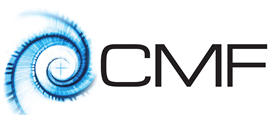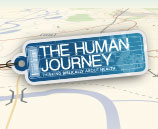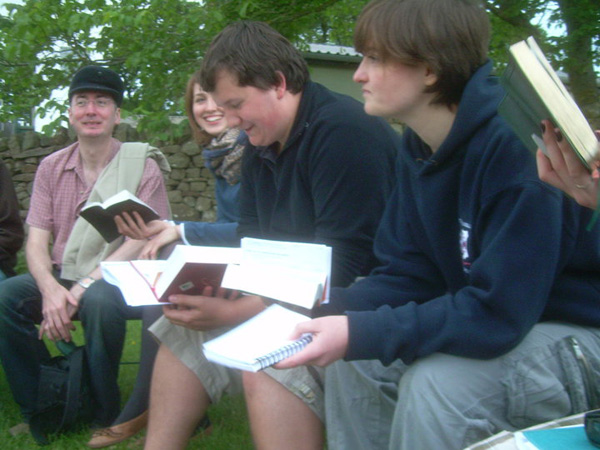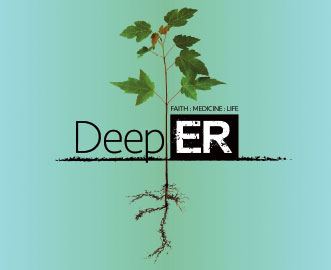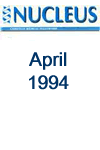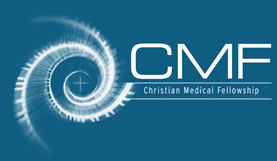Alternative medicine
During the past twenty years or so there has been a remarkable interest and growth in many alternative medical therapies or so called 'holistic' medicine. Holistic means taking into consideration the total 'make-up' of a person including their body, mind, emotions and spirit. The popularity of various therapies has resulted from many factors. These include a degree of disillusionment with orthodox medicine and an awareness of possible side-effects of drug therapies exemplified by the terrible thalidomide tragedy resulting in the birth of children with gross limb deformities. There has been a much publicised interest regarding the participation of prominent members of the Royal Family and other well-known personalities in alternative medical therapies. There has also been a recent increase in interest and awareness of the supernatural and of a spiritual content in our lives. This is perhaps something of a backlash from the materialism and explosion of scientific knowledge in our civilisation and society during recent decades.
It is interesting to note that many alternative therapies, whilst appearing on the surface to be quite different in their presentation, methods of diagnosis and treatment, are ultimately found to have a supposedly common mode of action frequently based on the concept of a certain 'life force' or 'vital energy' within the body. It is said that good health depends upon the balance of the two components of this vital 'life force', usually identified as yin and yang, and that ill health is usually a result of their imbalance.
This underlying philosophy can be identified in therapies such as acupuncture, homeopathy, reflexology, aromatherapy and others. Imbalance of this 'vital force' is said to be corrected by needling in acupuncture, minute doses of medicine in homeopathy, foot massage in reflexology and aromatic oils in aromatherapy. Identification of these basic concepts may, however, require reference to textbooks on these therapies rather than an easy acceptance of a so-called 'natural remedy' for which scientific evidence is somewhat lacking.
Yoga and transcendental meditation
It is therefore necessary to decide whether yoga and transcendental meditation can be properly set in the context of alternative medicine rather than that of physical and/or spiritual exercises. Whilst therapies such as homeopathy, acupuncture, reflexology and chiropractic would major on the treatment of physical disease, Bach flower remedies and areas of aromatherapy would be deemed particularly useful for the treatment of emotional disturbances.
Investigation of yoga and TM indicates that they are recommended as an aid to a mental and spiritual path towards the maintenance of good health, both emotionally and spiritually, and that the prevention and treatment of disease processes would follow as a significant by-product of spiritual well-being. It would seem, therefore, quite appropriate to include yoga and TM as part of the broad spectrum of altemative medicine with a holistic ideal.
In assessing the practices of yoga and TM from an orthodox medical point of view and also from a Christian perspective, it is necessary to determine the origins of these practices, their aims and the means used to achieve these aims. It is extremely difficult to assess positive or negative results of such treatments as scientific trials can hardly be appropriate when spiritual considerations are involved. For a Christian a further level of assessment is required; ie is this practice or therapy acceptable for the Christian to practise or to recommend? Ethical and moral considerations need also to be taken into account.
Origins
Investigation into the origins or roots of both yoga and TM show quite clearly that these are essentially based on Hindu religious philosophy and practices going back into ancient history. [1,2,3] Whilst it is true that elements of yoga can be traced back into early Hinduism, it emerged as a more recognisable system of exercises and bodily postures with spiritual significance as a result of the teachings of an Indian named Patanjali[4] round about 150 BC. Since then it has been developed and formalised with an emphasis on the specific significance of its various postures.[5,6] It has been suggested that yoga can be 'westernised' and divorced from its spiritual content. This is hardly a sustainable argument and would surely be considered inappropriate by Hindu teachers of yoga.
Meditation has always been a key religious activity and was an integral part of ancient Hinduism.[1,2,3] The popularity and spread of TM during the past thirty years is generally attributed to the influence and teachings of the Maharishi Mahesh Yogi to whom the Beatles and other 'spiritual searchers' made west to east pilgrimages in the I 960s. It was this same Maharishi Mahesh Yogi who advocated a new one world government as a grand alliance of nations with Nature and promoted this by advertisements in national newspapers during 1990.[7] He was also an initiator of the Natural Law Party which emerged in the UK prior to the General Election of I 992.[8] It was widely publicised that a prerequisite for the nomination as a candidate in the Party was the ability to practise yogic flying.[9] This was widely covered in the national press and the cartoonists had a field day!
There is little doubt that yoga and TM are inextricably linked by their Hindu origins.[10,11] In Matthew 7:18, Jesus said, 'A good tree cannot bear bad fruit and a bad tree cannot bear good fruit'. I believe that we need to take note of the tree and the roots from which yoga and TM originate.
Definitions
It is useful to examine the word 'yoga' itself and define its meaning. It comes from a Sanskrit word meaning 'yoke' or 'union'.[12] The purpose of yoga is to yoke the human spirit with Hindu gods or the great 'Universal spirit'[13] by means of physical postures.[14] There are many varieties of yoga and in, for example, Kundalini yoga, body posture is designed to align the seven chakras (or energy centres) along the spine, in order to allow the goddess Kundalini in the pelvis to rise up through the chakras and achieve union with the god Brahmin, located in the head. Karma yoga relates to an attitude of service to others. Hatha yoga is mainly concerned with health through the mastery of the mind, ie the supremacy of mind over matter. Hindu teachers of yoga indicate that all yoga is a religious exercise, that each yoga position represents an act of worship to a Hindu god and they maintain that physical exercise and postures cannot be separated from a mental and spiritual involvement.[15]
Yoga is widespread and popular at some universities and YMCAs. It is also interesting to note that in the 1980s the Department of Education investigated yoga and decided not to allow certain funding for this on the grounds that it was a religious activity.
It is sometimes claimed that there is such a thing as Christian yoga. This must surely be a contradiction in terms. It cannot be possible to have Christian Hinduism or Hindu Christianity.[16]
Meditation in general is defined as a mental and spiritual exercise directed towards a specific subject.[17] Naturally, for Christians, this means the direction of our minds and spirits towards God our Creator, Jesus Christ our Redeemer and the Holy Spirit our Comforter. It involves contemplation of the written word of God and all the richness which results from directing our minds and heartsforthe purpose of spiritual refreshment.
This has nothing to do, however, with TM which is of Hindu origin expounded by Hindu teachers, particularly the Maharishi Mahesh Yogi[18] and designed for the isolation of the divine spirit within us to achieve mystical union with Hindu gods. Various flavours of the word 'transcendental' can perhapssuggest strands of meaning. Trans' indicates the crossing of barners between the physical and the spiritual. and transcending' indicates the surpassing of spiritual experiences. These elements may be identified in TM with participants anticipating crossing physical and spiritual boundaries even to a possible level of self divinity! The chanting of a mantra is often used to aid the process. TM is gradually creeping into some areas of medical practice, executive business and human potential courses. It has also been used as an alternative treatment for some neuroses.
Practical issues
As physicians concerned for the health and wholeness of our patients, we may be faced with situations where those who consult us are practising yoga or TM for the treatment of disease of various sorts, others may enquire about it and some may wish to be referred for this therapy. Therefore:
- We need to have an understanding of what is meant by yoga and TM.
- If questioned it is surely quite permissible to point out possible spiritual implications.
- We need to have an honourable and balanced view of our position and not leave ourselves open to justifiable criticism. Would it not be rather odd, for example, to suggest to a Hindu patient that he or she should not be involved in yoga or TM?
- If a Christian or 'non-aligned' patient asks for advice, it is to my mind quite proper to give them accurate and sustainable informat ion regarding these practices.
- We need to remember that they have the choice; after all, the whole Gospel is an invitation and not an imposition.
- We need to be aware that Christian patients who have been involved in these activities (as well as some other alternative therapies) may suffer spiritual ill-health as a very unwelcome result. Ill effects may include anxiety, depression, fear, lack of Christian assurance, interference with prayer life and Bible reading. Even demonic oppression has been witnessed.
- Involvement with some alternative therapies may unwittingly serve as an introduction to New Age philosophy and activities. Some New Age practitioners indicate that alternative medicine is the 'medical arm' of the New Age Movement.[19]
Conclusion
There is, of course, nothing wrong with exercise, good posture and meditation as we seek health and wholeness for our bodies, minds, emotions and spirits. BUT the methods and activities used to attain these ends must, for the Christian, be acceptable to God, based on biblical principles and subject to the discernment and wisdom of the Holy Spirit. The Christian Church faces enormous challenges in the days ahead. Christian doctors and others in hospital and community care will be facing increasingly serious dilemmas in the areas of alternative medicine as well as abortion, euthanasia, eugenics etc. This will require us to be honourable, committed and caring in our professional lives and, supremely, in our stand for Christian truth and integrity. There will be confrontations and challenges ahead and we need to be prepared to stand up for biblical truth, being aware, of course, that we do not have to meet these in our own strength.
The question is whether yoga and TM are 'acceptable' to the Christian in this context. Let me end therefore by quoting Scripture:
Ex 20:3 'You shall have no other gods before me'.
2 Cor 6: 14 'Do not be yoked together with unbelievers. For what do righteousness and wickedness have in common? Or what fellowship can light have with darkness?'
Mt 11:29 Jesus said, 'Take my yoke upon you and learn from me, for I am gentle and humble in heart, and you will find rest for your souls'.
PS 1 9:14 'May the words of my mouth and the meditation of my heart be pleasing in your sight, 0 Lord, my Rock and my Redeemer'.
If we believe the word of God and the prompting of his Spirit in this area, I believe the answer will be unmistakable.
